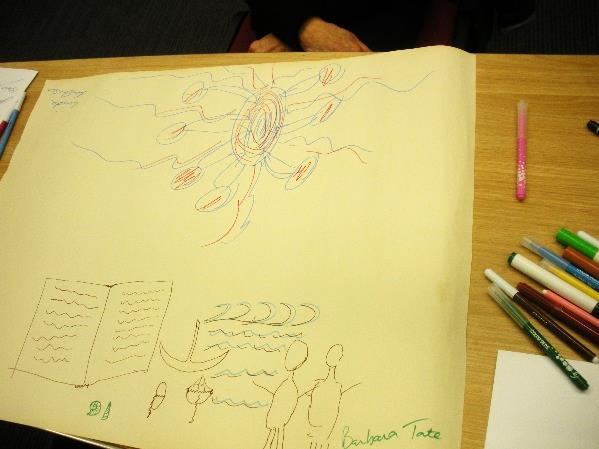In the previous post, I provided some examples of creating fast drawings during taught sessions. Here, I am going to present some ideas of slow drawing which will take 20-60 minutes.
Several are examples of observational drawing where what is observed is drawn which facilitates a deeper seeing. This happened during life drawing classes incorporated within a physiotherapy programme. Observed scientific drawings, such as drawing equipment or biological specimens under a microscope are more diagrammatic in nature. These use established codes such as drawing with graphite, in a particular orientation, noting only the main parts and removing superfluous (or distracting) elements. Only lines, cross hatching and dots are allowed. Similar observational drawing can focus on bones, organs, structural models or equipment. This slow deliberative drawing reveals aspects that are otherwise easily overlooked.
Drawings can build rapport in a group. One activity is paired drawings where students sit opposite each other and draw on a large sheet of paper laid between them. I ask them to “Draw who you are” on their half of the page. They draw in silence for five minutes then turn the page 180⁰ to decode one another’s drawing without interruption (2-5 minutes). Any errors are then corrected by the draw-er. Students report that this is less anxiety provoking and they gain a deeper connection compared to the more usual verbal introductions.

Lines, text and images work together for visual thinking in mind-maps. This single drawing collates a lot of information into a radial diagram, starting with a central idea with 5-7 primary branches leading to further branches. Mind-maps are also valuable for group work. On the central topic of lung cancer, I provided nursing students with the main branches (aetiology, clinical features, predisposing factors, treatment, and prognosis) for them to add to. The session was enabling: they co-constructed a diagram and looked up the aspects they did not know to complete their diagram. There are a variety of digital mind-mapping tools now to easily share mindmaps.
If you use drawing within your teaching or research it would be great to hear from you.







